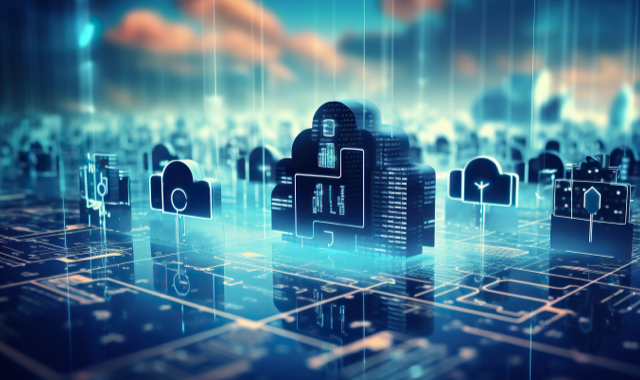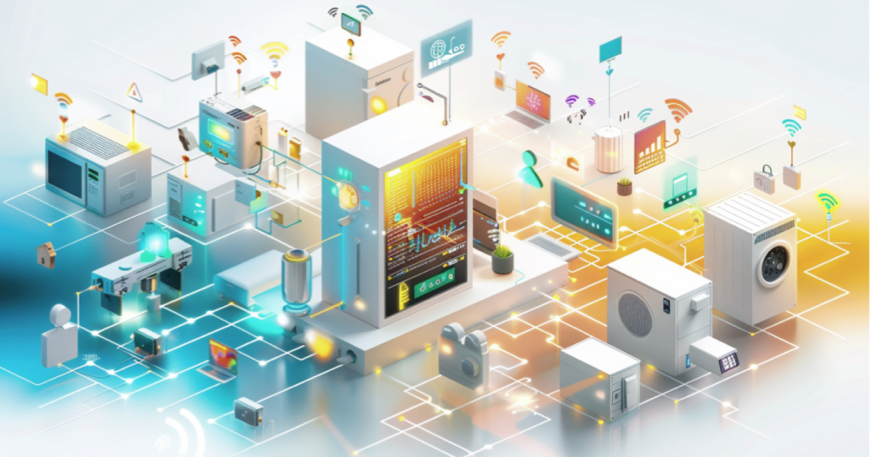The Edge Computing Revolution
The Internet, smartphones, social media; these are all crucial innovations and they are great examples of when technology advancements coalesce perfectly like neighboring pieces of a puzzle, changing the world in a big way. Folks, it’s time to shake things up again, and edge computing is the game changer.
As microprocessors continue to shrink while simultaneously gaining more processing power, better, stronger tech has emerged. A new generation of Edge Endpoints, based on Internet of Things (IoT) technology promises to significantly transform product and service delivery – basically a much needed overhaul of how work gets done. However, you need a well-established ecosystem first so suppliers can take advantage of the new capabilities. Can’t drive a Bugatti in the backwoods now, can you?
Traditionally, computer processing occurred either in large corporate data centers, or on end user devices like laptops, desktops, and smartphones. Edge/IoT solutions create a third option, often some place in between the two. In addition to supporting those two types of applications, edge computing enables intelligent, machine-to-machine communications.
Edge Intelligence can be placed in any type of system and serve any purpose. End points include a wide and expanding range of small, special purpose systems: sensors, computers, cameras, toys, machinery, smartphones, and devices that have not yet been conceived. These solutions solve numerous problems in any niche including smart homes, business equipment, smart grid, consumer gadgets, and smart factories. The technology’s potential uses are only constrained by individual/corporate imagination, (and for now) the aforementioned lacking ecosystem. So, why is this technology so monumentally impactful?
Edge Computing Changes How Data is Processed

Real-time local data reduces network loads and latency
Edge creates a new computing paradigm. An “intelligent edge” endpoint has its own intelligence and computing power and is no longer wholly reliant on the cloud. Instead of sending all the raw data it collects or generates to a centralized cloud for processing, some (and in some cases all) processing and analysis occurs locally, at the device itself.
Therefore, these emerging, next generation intelligent devices act like remote knowledge workers. The IoT subsystems are smart and collect information about how devices are operating. The edge solution then uses artificial intelligence and machine learning to analyze the data locally and also act upon it in a growing number of cases. The use of advanced analytics, artificial intelligence, or data-driven insights enables companies to gain a competitive advantage. The potential benefits are dramatic.
Access to Real Time Data
Nowadays, corporations are awash with information. According to CDOTrends on Big Data, the world generated 64.1 Zettabytes (1 Zettabyte = 1 trillion Gigabytes) in 2020, and that number is expected to reach 175ZBs in 2025, a compound annual growth rate (CAGR) of 23%.Data by itself is of little use. One problem is that information is perishable. A data point illustrating that a plant conveyor belt is slowing down is not of much use after the belt breaks down. But if the information is delivered in real time, the warehouse staff can take steps to fix the problem and minimize its potential damage. The Intelligent Edge makes that step possible.Reduce Network Load
Another plus is organizations lower the amount of information traveling across the enterprise network. Processing information locally means less data is sent long distance. Network traffic drops, performance improves, and companies avoid upgrades needed to accommodate bandwidth overloads.Lower Latency
Furthermore, network delays become less likely. The further the distance traveled; the longer it takes to complete a transaction. Edge lowers travel distance and time. Some applications, such as financial services perform mission-critical functions, and milliseconds matter. Edge shaves milliseconds off of transaction times improving overall efficiency.Reduce Costs
Since information is processed locally, the need to ship data to a central site diminishes, and so in turn does the compute load. Requiring less centralized computer processing curtails Data Center costs.Maintain Compliance
Increasingly, the government is becoming involved with how companies collect and use customer information. The European Union’s General Data Protection Regulation (GDPR) and California Computer Privacy Act create new guidelines for how companies collect and protect sensitive information. As a result, companies must be aware of where they process information and take steps to ensure that they comply with the local mandates. Intelligent Edge provides companies with more flexibility in where and how their information is processed.Complete Work in New Locations
Many companies have products, goods, and equipment stationed in locations that are hard to reach i.e. rural areas, at sea, and in mountainous terrain. In such locations, electricity is scarce. IoT devices come in small form factors and use limited amounts of power. Therefore, they are able to provide those companies with more visibility into how such systems are operating. Also, network connections may be limited and expensive. Edge devices offer companies higher performing, more cost-effective solutions than legacy design options.The Edge’s Many Use Cases

The move to edge computing will increase over time
With edge, businesses are no longer encumbered by legacy system design. Historically, they often had to collect information, generate reports, and identify what happened after the fact. In many cases, they had limited to no visibility into the devices they were using. A smart meter could show how much energy a business consumed. Now, the Intelligent Edge could tell them precisely how much energy their HVAC used. Consequently, the intelligent Edge’s possible impact is broad and far reaching: these solutions can be incorporated into any machine, device, or product!
Possible Edge devices include:
- All sorts of intelligent, interactive gadgets we have not conceived of yet.
- Smart homes, consumer devices, like intelligent TVs, lights, heating systems, refrigerators, stoves, microwave ovens.
- Smart Grid, transformers, meters, sensors, SCADA systems.
- Business equipment, chairs, cubicles, printers, office lighting and security systems.
- Autonomous vehicles, self-driving cars, trucks, drones, and even airplanes.
- Manufacturing, Programmable Logic Controllers units, SCADA systems, sensors, robots, and a wide variety of other mechanical devices.
Possible Edge services include:
- Factory equipment maintenance becomes more proactive. For instance, a sensor triggers an alert that tells technicians that the heat is rising in a Programmable Logic Controller.
- Health systems monitor patient glucose levels and send that information to the doctor. No need for the patient to visit the hospital.
- Smart city traffic lights change depending how many cars reach them rather changing lights at set times, surveillance systems,
- Statistical information is delivered to sports fans’ seats. They see not only how the game is progressing but also how the odds change during the game, so they can place a wager.
- Smart Grid, here energy companies see transformer wear and tear, make adjustments as needed, and avoid outages
What is the Intelligent Edge Missing? An Ecosystem
While the Intelligent Edge offers tremendous potential, what it still lacks today is a mature support and development ecosystem. In theory, a myriad of new applications is possible. However, creating intelligent edge solutions requires that system infrastructure be built out and tied together in a cost effective way.
Companies and consumers desire turnkey products and solutions. Edge systems include a large, and growing, number of items that need to be bundled together. Now, such work is often onerous, complex and expensive. The breadth of options is quite expansive, and the technology is complex. So, businesses must invest a lot of time, manpower, and money creating their systems.
Furthermore, a number of new elements also need to be created, integrated, delivered, and supported. Illustrating how challenging the work is, simply segmenting the necessary items into clear categories is difficult. Hardware, like IoT sensors, includes items, like database management systems and artificial intelligence has historically been lumped under software. Here is a high-level overview of what pieces need to be put together.
Hardware
Vendors must design small, rugged, powerful, and energy-efficient hardware that is either embedded in other systems or stands alone. These IoT systems include storage, computational processing power, software, virtualization, and increasingly intelligent AI and ML automation.AI and ML
Eventually AI will be like operating systems, a crucial necessity in every type of computer application. People are already talking about AI everywhere. If things keep playing out as they are, the proliferation of next generation, powerful Generative AI solutions like ChatGPT will drive two urgent Edge ecosystem needs.More Compute
This software does not function like traditional solutions. Consequently, special purpose chips are being designed to optimize running the code. Second, someone needs to take a Generative AI engine, like ChatGPT, connect it to other applications, and create new edge solutions.Connectivity
Nowadays, networking is the building block for just about all technology interactions. The majority of intelligent edge devices will require network subsystems supporting Wi-Fi, BLE, 5G, or less energy intensive wired or wireless protocol to move information once it is generated (even if only connected for a brief instant, once in a while).Security
As companies expand their networks to these new intelligent end points, the potential for them being compromised rises. Security checks need to be put in place to ensure that intelligent edge devices do not become a hacker’s entry way to the enterprise network.Embedded System Development Deficiencies Become Clear
Whenever a new technology emerges, it requires development of new products as well as integration and other support services. Different vendors create one component, like a microprocessor. It is then bundled into a solution that includes many other components.
Usually if companies want to take advantage of the technology, they need to build it themselves.
A company often has ideas about how to leverage smart edge devices, but not the people or know-how to deliver it for a variety of reasons. Each company has a unique market niche. So, they want to customize IoT systems for their own needs and interface it with their legacy systems.
Most companies are simply not capable of pulling all of those pieces together entirely on their own. They have a good understanding of how to build their product or deliver their service but lack embedded system or edge expertise.
Furthermore, engineering departments are already quite busy. The list of projects that management wants to complete is always longer than the available staff. Companies try to maximize the value of their resources because their technology experts are over-committed.
What businesses need are partners who can fill the void and deliver turnkey intelligent edge embedded software [engineering/development] services; a partner that empowers them to transform legacy dumb devices into intelligent solutions. They accelerate time to market and lower new product Research and Development risk by managing entire projects from beginning to end. Only with such assistance can suppliers realize the Intelligent Edge’s vast potential. As veteran pioneers in the Intelligent Edge and IoT industry,embedUR is the ideal partner to accelerate and enhance your product development.





